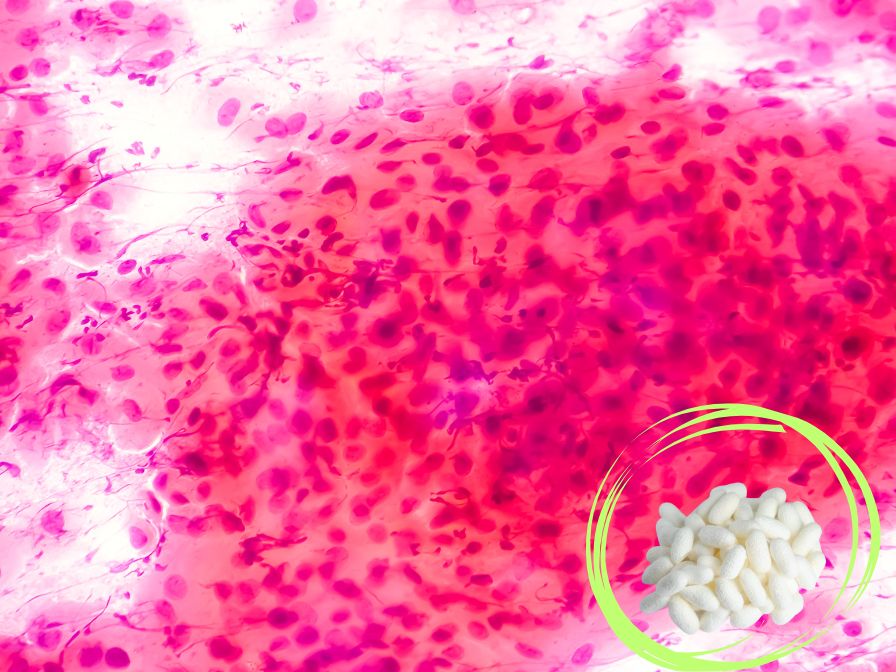It has been demonstrated that sericin exerts a remarkable modulatory action on inflammatory processes. This natural protein can inhibit the production of pro-inflammatory cytokines such as tumor necrosis factor alpha (TNF-α), interleukin-1β (IL-1β), and interleukin-6 (IL-6). At the same time, it stimulates the production of anti-inflammatory cytokines like interleukin-10 (IL-10), thus helping to restore a healthy immune balance in conditions characterized by chronic inflammation.
Research on cellular models has revealed how sericin interacts with specific receptors present on macrophages and dendritic cells, modifying the intracellular signaling pathways involved in the inflammatory response. In particular, targeted inhibition of the NF-κB pathway, the main regulator of pro-inflammatory gene expression, has been observed. This mechanism of action makes sericin a potential therapeutic ally for all those conditions where immune activation is excessive or inappropriate.
Antioxidant activity and cellular protection
An aspect that complements sericin's immunomodulatory activity is represented by its antioxidant properties. Oxidative stress is an important amplifier of the inflammatory response, creating a vicious cycle that contributes to the progression of numerous pathologies. Sericin has demonstrated a remarkable ability to neutralize reactive oxygen and nitrogen species, thus protecting immune cells from oxidative damage and preserving their functionality.
Several studies have revealed how treatments with sericin significantly reduce lipid peroxidation and DNA damage in cells subjected to oxidative stress. This protective action translates into greater cell vitality and reduced activation of stress-related pro-inflammatory pathways, further contributing to the overall immunomodulatory effect of this protein.
Regulation of adaptive immunity
Beyond its effects on innate immunity, recent research has highlighted sericin's role in modulating the adaptive immune response. It has been observed that this protein influences the differentiation of T lymphocytes, favoring the development of regulatory subpopulations (Treg) at the expense of pro-inflammatory phenotypes such as Th17. This shift in balance toward a more tolerogenic immunological profile represents a particularly valuable mechanism for the treatment of autoimmune diseases.
Sericin has also shown the ability to modulate antibody production, influencing isotype switching and promoting the production of immunoglobulins with anti-inflammatory activity. These effects on the humoral component of adaptive immunity amplify sericin's therapeutic potential in clinical contexts where immune regulation plays a crucial role.
Applications in cancer immunotherapy
A particularly promising area of research concerns the use of sericin as an adjuvant in oncological immunotherapy. The tumor microenvironment is typically characterized by local immunosuppression that limits the effectiveness of immunological therapies. Preliminary research suggests that sericin may help reprogram this microenvironment, reducing the presence of immunosuppressive cells such as M2-type macrophages and myeloid-derived suppressor cells.
It has also been observed that with this natural molecule it is possible to enhance the cytotoxic activity of CD8+ T lymphocytes and Natural Killer cells, increasing their ability to recognize and eliminate tumor cells. These immunostimulating effects, combined with the ability to modulate the inflammatory response, make sericin an interesting candidate for combined immunotherapy approaches, potentially capable of overcoming the resistance mechanisms that currently limit the effectiveness of oncological treatments.
Innovative formulations and delivery systems
The development of innovative formulations represents another very important characteristic for the clinical application of sericin as an immunomodulatory agent. In recent years, hydrogels, nanoparticles, and sericin-based scaffolds have been created, designed to optimize the bioavailability and controlled release of this protein. These systems allow overcoming limitations such as rapid in vivo degradation, prolonging the biological activity of the protein. Hybrid nanoparticles, where sericin is associated with other biomaterials such as chitosan and hyaluronic acid, should also be observed with great attention.
Formulations of this type have demonstrated greater stability and ability to reach specific immunological districts, improving overall immunomodulatory efficacy. The possibility of further customizing these nanoparticles with specific ligands opens new avenues for immunological therapies tailored to different pathological conditions.
Conclusions
When we talk about the immunomodulatory properties of sericin, we are referring to a therapeutic treasure still largely to be explored, with applications ranging from the treatment of chronic inflammatory diseases to oncological immunotherapy. The extraordinary ability of this protein to selectively modulate different aspects of the immune response, combined with the favorable safety profile derived from its natural origin, makes it a truly promising candidate for the development of innovative therapies.
The increasingly in-depth understanding of the molecular mechanisms that underlie these properties, together with the development of advanced formulations, is gradually bringing sericin closer to clinical use. If current results are confirmed by larger clinical studies, this protein could represent an important contribution to the treatment of conditions characterized by immune dysregulation, offering new hope for improving the quality of life of many patients through more effective and better tolerated approaches.


